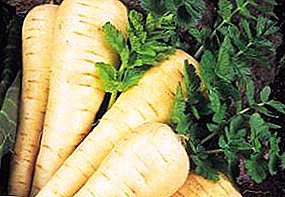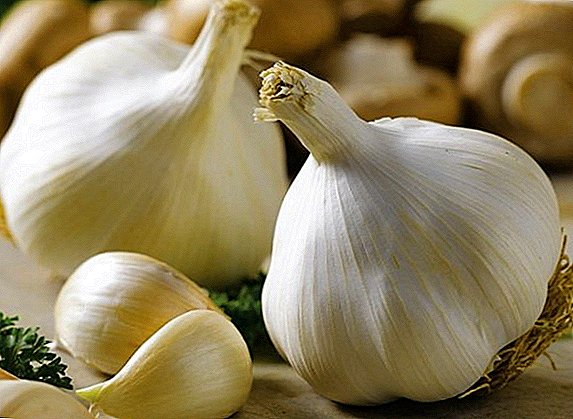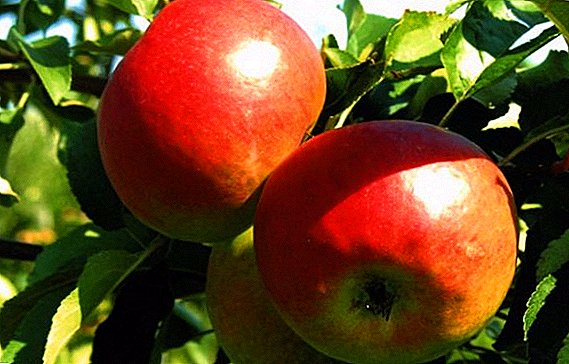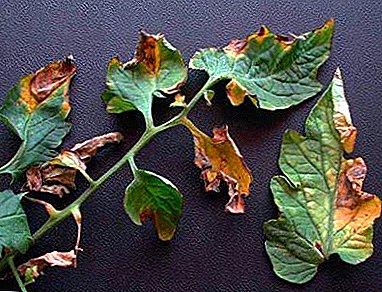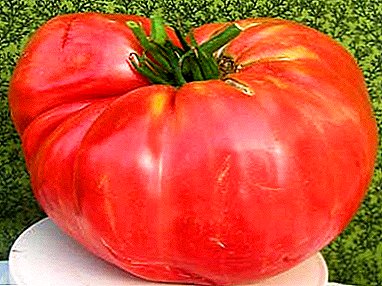
All fans of large-fruited tomatoes will be interested in "Sugar giant". This is a very productive variety. He will please summer residents not only with the taste of his fruits, but also with unpretentious care.
Tomato "Sugar giant" - the fruit of works of Russian breeding masters, was bred in 1999, a year later received state registration as a variety recommended for cultivation in open ground and in greenhouse shelters.
In our article, we are pleased to introduce you to this variety closer, present its full description and characteristics, especially the cultivation.
Sugar Giant Tomato: variety description
 Sugar giant is an indeterminate standard variety of tomatoes. In terms of maturation refers to the mid-early species. Suitable for growing on open ground, and in greenhouses. Resistant to diseases and pests. The plant is quite high 120-150 cm, in the open field it can reach 180 cm. Especially it grows in the southern regions.
Sugar giant is an indeterminate standard variety of tomatoes. In terms of maturation refers to the mid-early species. Suitable for growing on open ground, and in greenhouses. Resistant to diseases and pests. The plant is quite high 120-150 cm, in the open field it can reach 180 cm. Especially it grows in the southern regions.
With good care from one bush you can get up to 5-6 kg of wonderful fruits. With a recommended planting density of 3 bushes per square meter. m can collect up to 18 kg. This is a very good indicator for tomatoes, even for such large ones. Among the features most note the size and taste of the fruit. You should also highlight in the description of the variety of tomato "Sugar Giant" that it is unpretentious and resistant to diseases.
Specifications
The main advantages of the "Sugar giant" are:
- large-fruited tomatoes;
- universality of use;
- resistance to temperature extremes and lack of moisture;
- high immunity to diseases.
Among the shortcomings of the variety are the fact that the plant is demanding of the fertilizer regime during the growth of plants, as well as weak branches.
Upon reaching the fruit of varietal maturity, they acquire a pink-red color. The shape is rounded, slightly elongated. Tomatoes are quite large 350-450 grams, sometimes, can reach 650-700 grams, but this is rare, and even then only in the south. The number of chambers 6-7, the solids content of 5%. Tomatoes "Sugar giant" have excellent taste. For conservation is not suitable because of the size of the fruit. In barrel salting can be used. Due to the high sugar content and low percentage of dry matter in the composition of these tomatoes, a remarkable juice is obtained.
A photo
Pay attention to a photo of a tomato "Sugar Giant":


Growing up
Shrub is usually formed in two stems, but it can be in one. Because of its high growth, it is imperative to tie up and make supports under the branches. This will provide additional protection from the wind if the tomato is grown in open ground. Very good response to complex subcortex.
"Sugar giant" in unprotected soil is best grown in the southern regions. In the areas of the middle lane, the bushes will be lower and the fruit smaller, but this does not affect the taste. To increase the yield in the middle lane, it is better to grow it in film shelters. In more northern areas yields a good harvest only in greenhouses.
Diseases and pests
 By fungal lesions, the plant practically does not suffer. The only thing to fear is diseases associated with improper care. To avoid such problems when growing, you should regularly ventilate the room where your tomatoes grow and observe the mode of watering and lighting.
By fungal lesions, the plant practically does not suffer. The only thing to fear is diseases associated with improper care. To avoid such problems when growing, you should regularly ventilate the room where your tomatoes grow and observe the mode of watering and lighting.
Of the harmful insects are often exposed to melon gum and thrips, especially in the southern regions, the Bison is successfully used against them. It can also be attacked by the Colorado potato beetle, and the drug Prestige is used against it.
Like many other species, the greenhouse whitefly may invade, they are struggling with it with the help of the drug Confidor.
As can be seen from the description, tomatoes “Sugar Giant” is not the heaviest variety to care for, the only difficulty is the weakness of both the bush and its branches, this requires garters and supports, otherwise everything is more complicated than with other varieties of tomatoes. Good luck and great harvests.





